Franz Kröger
The Beginnings of Christian Missions among the Bulsa
and the History of the Catholic Parish
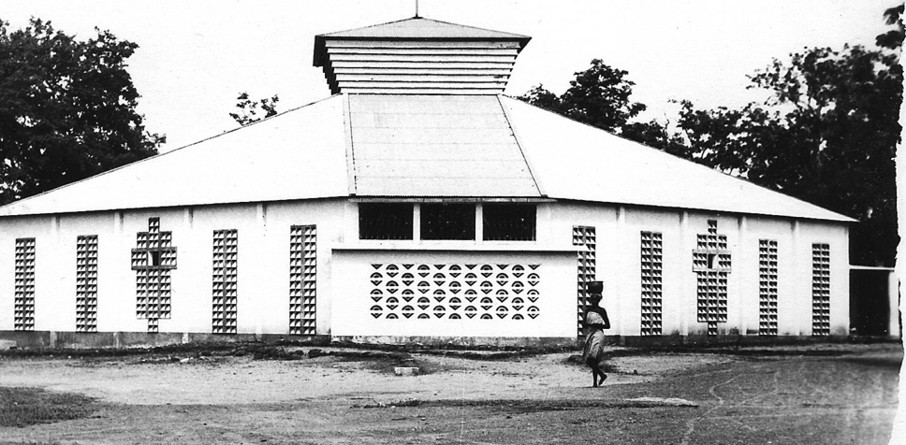 Preliminary Remarks: To my knowledge a comprehensive handwritten or printed history of the Catholic
Mission of Wiaga does not exist. So I had to make use of several unpublished written sources and interviews. My main
source was a text compiled by Melanie Akankyalabey on the occasion of the Diamond Jubilee of
Wiaga Parish (2002). Useful information was provided by Father James Tachuah, the present parish priest,
Sylvester Agyenta, one of the first converts and Michael Abaala, who also wrote an article on the Wiaga
Clinic.
Preliminary Remarks: To my knowledge a comprehensive handwritten or printed history of the Catholic
Mission of Wiaga does not exist. So I had to make use of several unpublished written sources and interviews. My main
source was a text compiled by Melanie Akankyalabey on the occasion of the Diamond Jubilee of
Wiaga Parish (2002). Useful information was provided by Father James Tachuah, the present parish priest,
Sylvester Agyenta, one of the first converts and Michael Abaala, who also wrote an article on the Wiaga
Clinic.
After the Ashanti Hinterland had become the British protectorate “Northern Territories of the Gold
Coast” in 1901, the way was clear for intensive Christian missionary activities. In the Gold Coast
Colony, i.e. the coastal area of modern Ghana, several churches, most of them Protestant, had done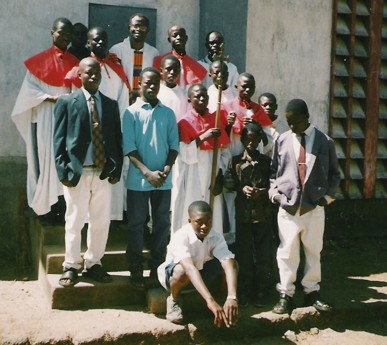 successful mission work, e.g. the
Methodists, Presbyterians and the Anglicans. It was to be expected that these churches would send
missionaries to the north to divide the Northern Territories (N.T.) into spheres of influence for the
respective churches.
successful mission work, e.g. the
Methodists, Presbyterians and the Anglicans. It was to be expected that these churches would send
missionaries to the north to divide the Northern Territories (N.T.) into spheres of influence for the
respective churches.
It was, however, French-speaking missionaries who founded the first mission stations in the north.
Why was this? Some explanations can be found in the interior politics of France. Anti-clerical
tendencies in the political field were growing at the end of the 19th century, and French missionaries
working in today’s Burkina Faso feared that they all might be called back to their mother country.
So they tried to prepare another field for missionary work in a British colony.
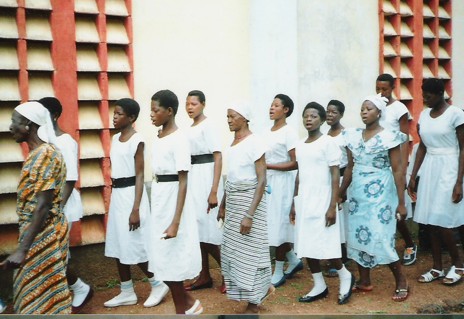 In 1906, three
zealous members of the Order of the White Fathers (official name: Missionaries
of Africa) left Ouagadougou for a 180 km walk to Navrongo. It was Fr. Chollet, the head of the
group, Fr. Oscar Morin and Brother Eugen Gall, who arrived at Navrongo after a 33-day journey. The White Fathers had contacted the British authorities prior to this and been given permission to
found a mission station with a school on condition that they would teach only in English.
In April 1906, they established the first Christian mission of Northern Ghana in Navrongo, and
in December 1907 a catholic school opened its gates for the first 26 African male pupils.
In 1906, three
zealous members of the Order of the White Fathers (official name: Missionaries
of Africa) left Ouagadougou for a 180 km walk to Navrongo. It was Fr. Chollet, the head of the
group, Fr. Oscar Morin and Brother Eugen Gall, who arrived at Navrongo after a 33-day journey. The White Fathers had contacted the British authorities prior to this and been given permission to
found a mission station with a school on condition that they would teach only in English.
In April 1906, they established the first Christian mission of Northern Ghana in Navrongo, and
in December 1907 a catholic school opened its gates for the first 26 African male pupils.
The second mission station was Bolgatanga (Feb. 1925), the third Wiaga in the Bulsaland. In April
1927 the White Fathers Dagenais and Champagne, assisted by Brother Albert, founded the Wiaga
mission at its present site, and they named it St. Theresa. In 1930 the first school was opened in
Wiaga.
Wiaga Chief Azenaab gave the White Fathers a large area on which to build their living quarters,
their church and schools. Later they marked the bounderies of this territory by planting kapok-trees,
some rows of which can still be seen today.
The relation between the first missionaries and the local population was not always without tensions
in these early days. The White Fathers had founded their station on the site of one of the most
important earth shrines (tanggbana), Baan-kpalik by name. The altar is a rock where this tanggbain
(sing.) receives its sacrifices, and where rainwater is collected in a shallow hole. The earth-priest
(teng nyono) uses this water for an ordeal, e.g. if somebody is accused of witchcraft. The early
missionaries tried to close the hole with cement, but still the sacrificers find enough rainwater on the
rock to carry out the ordeal. The small belfry of the church was erected on this rock. In spite of these
obstructions the earth priest from Napulinsa still offers sacrifices to his tanggbain, though usually
at night.
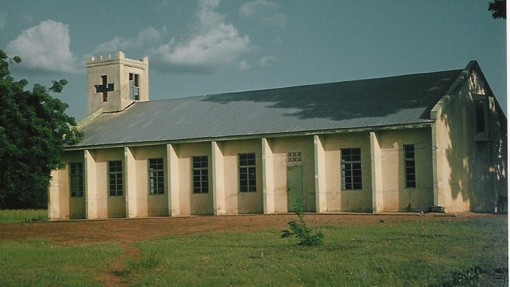 A vivid picture of the first contacts between the white missionaries and the local people can be found
in Leander Amoak’s autobiography (see BULUK 3, p. 18-19). In 1933 the Wiaga missionaries gave
up their station to move to Nandom. The reason for the closure of Wiaga mission was not only the
slow pace of conversion among the Bulsa, but the overwhelming number of converts in the Upper
West Region (Jirapa and Nandom), which called for more hands to cope with the situation.
A vivid picture of the first contacts between the white missionaries and the local people can be found
in Leander Amoak’s autobiography (see BULUK 3, p. 18-19). In 1933 the Wiaga missionaries gave
up their station to move to Nandom. The reason for the closure of Wiaga mission was not only the
slow pace of conversion among the Bulsa, but the overwhelming number of converts in the Upper
West Region (Jirapa and Nandom), which called for more hands to cope with the situation.
Six years later (1939), however, the station was reopened again by Oscar Morin, who in the
meantime (1933) had become bishop of the new Apostolic Vicariate Navrongo (Grosskinsky, p. 12).
The Wiaga parish, then renamed St. Francis Xavier, was put under the pastoral care of Fr. Couture
and Fr. Paul Lavallée. From this time on the mission was able to show continual growth, as can be
seen from the number of conversions and the extension of the station and its institutions.
Today, there are two catholic parishes (Wiaga, and - since February 2002 - Fumbisi) and eight
outstations in the Bulsa District. Nine Bulsa students, mainly of Wiaga have become catholic
priests so far, and two more are in the stages of formation.
School-education has always been of paramount importance for the Christian missions. After a
catechist school, where the late Robert Ayomah and Bartholomew Agaasa were teachers, the White
Fathers restarted a Major Seminary in 1953, just like that which had existed in Navrongo between 1932 and
1936. Benedict Der, professor emeritus at the University of Cape Coast, wrote about this school in his
publication of 2001 (p. 129-30):
"Located first at Wiaga, it was transferred to Tamale in 1955 and given the name St. Charles Junior
Seminary and Secondary School... The School has had a considerable impact on the advancement
of higher education in Northern Ghana. Many secondary school leavers in the North are its products
and a significant number of the University graduates from the North have been its pupils".
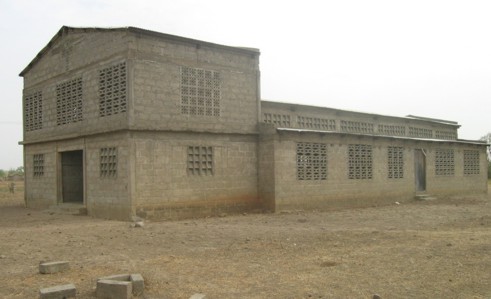
Several more schools of different types were established in the following years:
1950: St. Francis Xavier Primary School, originally a coeducational school, today a boys’ school
with 409 pupils (2002)
1957/58: St. Martin’s Middle School, which is a Junior Secondary School today,
1970 (?): Azenaab Girls’ Primary School
1980: Wiaga Day Care for pre-school pupils.
2002: Azenaab Girls' JSS (the "pioneers" will complete in 2006)
Since 1990, thirty-two “shepherd schools” have been established on the initiative of Fr.
Hugo van
den Haute and the late Gerald Atayaaba “to take care of our unfortunate brothers and sisters who
couldn’t attend the regular Education System in the Parish” (M. Akankyalabey, p. 11). The total
enrolment since 1990 is recorded as 3,854 children (2,451 boys and 1,403 girls).
The idea that the propagation of the Christian belief is the only essential task of missions is certainly
outdated today. From the early beginnings of their activities, Christian missionaries have tried to fill
gaps beyond the momentary possibilities of the state.
Apart from their engagement in school education the Wiaga missionaries were engaged in many
other fields of development. Michael Abaala wrote a special article about the Wiaga clinic. Also, in
the field of agriculture the Catholic Mission stimulated the endeavours of Bulsa people to improve
the efficiency of their farmwork. In earlier times they had encouraged and promoted bullock
ploughing. Trained agriculturists advised local farmers in methods of improving crop production by
means of introducing new seeds (e.g. Chinese Groundnut), the use of fertilizers, soil conservation,
the propagation of fruit trees (especially mangoes) etc.
Our essay on the Catholic Mission of Wiaga has shown that the activities of the missionaries were
concerned with many spheres of life. Agricultural projects and building schools and clinics do
probably not belong to the Christian missionary mandate in its narrow sense. It is, however, part of
the Christian conception itself, if we consider schools, clinics and agricultural stations as starting
points for overcoming poverty, disease and illiteracy and for promoting cultural, social and economic
development.
Catholic Priests of Wiaga Parish
It has
not yet been possible to make a complete and reliable list of all Wiaga parish
priests after the foundation of the Mission station in 1927 by Fr. Dagenais and
Fr. Champagne (not identical with the later bishop). The following list of the
last parish priests also possibly needs correction and additions (e.g. for the
gap between Fr. Lavallée and Fr. Lamaire).
Fr. Paul Lavallée
(born ca. 1914, died January 29, 1954 at Navrongo); together with Fr. Contu he
reopened the Wiaga Mission in 1939; he started to build the Mission Church and
the stone buildings where the priests lived until 1980. It was completed in 1948.
Fr. Lamaire, first priest in Wiaga April 1957-1960;
came from Gbinduri, his second parish priest was Fr. Marneffe; Fr. Lamaire
completed the Mission Church; first contacts with the Presbyterian missionary
Colin Paton in 1957
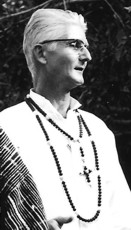
Fr. Philip Marneffe (see photo), born ca. 1924; died September 2, 1977,
first parish priest 1960-77 together with his second parish priest Fr. Gérard Guitet;
Fr. Marneffe was the founder of the Mission Clinic (see article by Michael
Abaala).
Fr. Cunningham, Irish, was at Wiaga for about 4-5
years (as the first priest?), in 1978 as second priest under Fr. Marneffe; later
(ca. 1991?)
being reduced to lay status
Fr. Kevin Rand, Irish, acting parish priest after
van den Hoven’s death (for only a short time in 1984)
Fr. Jan van den Hoven (Dutch, born ca. 1933; died
April 19, 1984 in Wiaga); his grave can be seen in front of the parish church.
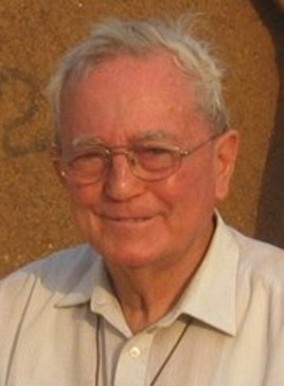 Fr.
Hugo van den Haute (see photo),
first parish priest 1984-89; Wiaga was his first station as a second parish
priest; as a Belgian he had to leave Ghana within 48 hours after the outbreak of
the Congo Crisis; after 5 months in Upper Volta (Burkina Faso) he returned to
Ghana, to become parish priest again after Fr. van den Hoven’s death. Together
with Gerald Atayaaba he was the initiator of the Shepherd Schools.
Fr.
Hugo van den Haute (see photo),
first parish priest 1984-89; Wiaga was his first station as a second parish
priest; as a Belgian he had to leave Ghana within 48 hours after the outbreak of
the Congo Crisis; after 5 months in Upper Volta (Burkina Faso) he returned to
Ghana, to become parish priest again after Fr. van den Hoven’s death. Together
with Gerald Atayaaba he was the initiator of the Shepherd Schools.
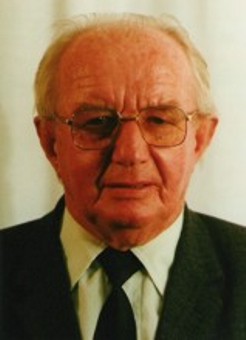
Fr. Heinrich Kirschner (see photo), German, born
ca. 1929 in Falkenau, died August 5, 2001 in Bolgatanga; buried in Wiaga
Catholic Cemetary; for his biography see BULUK 3, p. 17.
Fr. Joseph Grosskinsky (German), 2001-03; he built
the big catholic church in Kadema and expanded the Sandema Church; retired in 2003, but is still doing
missionary work in the Navrongo-Bolgatanga Diocese.
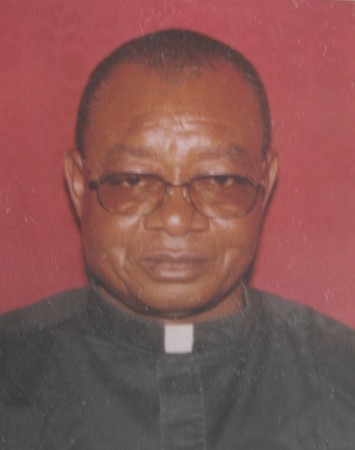 Fr.
James Tachuah (see photo), Nankani
(a neighbouring people of the Bulsa),
since 2003 parish priest in Wiaga, assisted by Fr. Jacob
Kihimi Moldana (Nabdam) and (after 2006) by Fr Vitus;
Fr.
James Tachuah (see photo), Nankani
(a neighbouring people of the Bulsa),
since 2003 parish priest in Wiaga, assisted by Fr. Jacob
Kihimi Moldana (Nabdam) and (after 2006) by Fr Vitus;
Fr. James is the first African
head of the parish.
 Preliminary Remarks: To my knowledge a comprehensive handwritten or printed history of the Catholic
Mission of Wiaga does not exist. So I had to make use of several unpublished written sources and interviews. My main
source was a text compiled by Melanie Akankyalabey on the occasion of the Diamond Jubilee of
Wiaga Parish (2002). Useful information was provided by Father James Tachuah, the present parish priest,
Sylvester Agyenta, one of the first converts and Michael Abaala, who also wrote an article on the Wiaga
Clinic.
Preliminary Remarks: To my knowledge a comprehensive handwritten or printed history of the Catholic
Mission of Wiaga does not exist. So I had to make use of several unpublished written sources and interviews. My main
source was a text compiled by Melanie Akankyalabey on the occasion of the Diamond Jubilee of
Wiaga Parish (2002). Useful information was provided by Father James Tachuah, the present parish priest,
Sylvester Agyenta, one of the first converts and Michael Abaala, who also wrote an article on the Wiaga
Clinic.  successful mission work, e.g. the
Methodists, Presbyterians and the Anglicans. It was to be expected that these churches would send
missionaries to the north to divide the Northern Territories (N.T.) into spheres of influence for the
respective churches.
successful mission work, e.g. the
Methodists, Presbyterians and the Anglicans. It was to be expected that these churches would send
missionaries to the north to divide the Northern Territories (N.T.) into spheres of influence for the
respective churches.  In 1906, three
zealous members of the Order of the White Fathers (official name: Missionaries
of Africa) left Ouagadougou for a 180 km walk to Navrongo. It was Fr. Chollet, the head of the
group, Fr. Oscar Morin and Brother Eugen Gall, who arrived at Navrongo after a 33-day journey. The White Fathers had contacted the British authorities prior to this and been given permission to
found a mission station with a school on condition that they would teach only in English.
In April 1906, they established the first Christian mission of Northern Ghana in Navrongo, and
in December 1907 a catholic school opened its gates for the first 26 African male pupils.
In 1906, three
zealous members of the Order of the White Fathers (official name: Missionaries
of Africa) left Ouagadougou for a 180 km walk to Navrongo. It was Fr. Chollet, the head of the
group, Fr. Oscar Morin and Brother Eugen Gall, who arrived at Navrongo after a 33-day journey. The White Fathers had contacted the British authorities prior to this and been given permission to
found a mission station with a school on condition that they would teach only in English.
In April 1906, they established the first Christian mission of Northern Ghana in Navrongo, and
in December 1907 a catholic school opened its gates for the first 26 African male pupils.  A vivid picture of the first contacts between the white missionaries and the local people can be found
in Leander Amoak’s autobiography (see BULUK 3, p. 18-19). In 1933 the Wiaga missionaries gave
up their station to move to Nandom. The reason for the closure of Wiaga mission was not only the
slow pace of conversion among the Bulsa, but the overwhelming number of converts in the Upper
West Region (Jirapa and Nandom), which called for more hands to cope with the situation.
A vivid picture of the first contacts between the white missionaries and the local people can be found
in Leander Amoak’s autobiography (see BULUK 3, p. 18-19). In 1933 the Wiaga missionaries gave
up their station to move to Nandom. The reason for the closure of Wiaga mission was not only the
slow pace of conversion among the Bulsa, but the overwhelming number of converts in the Upper
West Region (Jirapa and Nandom), which called for more hands to cope with the situation.



